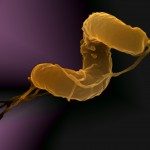Link to Pubmed [PMID] – 28393582
Crit Rev Clin Lab Sci 2017 05;54(3):185-204
Cerebrospinal fluid (CSF) is an excellent source of biological information regarding the nervous system, once it is in close contact and accurately reflects alterations in this system. Several studies have analyzed differential protein profiles of CSF samples between healthy and diseased human subjects. However, the pathophysiological mechanisms and how CSF proteins relate to diseases are still poorly known. By applying bioinformatics tools, we attempted to provide new insights on the biological and functional meaning of proteomics data envisioning the identification of putative disease biomarkers. Bioinformatics analysis of data retrieved from 99 mass spectrometry (MS)-based studies on CSF profiling highlighted 1985 differentially expressed proteins across 49 diseases. A large percentage of the modulated proteins originate from exosome vesicles, and the majority are involved in either neuronal cell growth, development, maturation, migration, or neurotransmitter-mediated cellular communication. Nevertheless, some diseases present a unique CSF proteome profile, which were critically analyzed in the present study. For instance, 48 proteins were found exclusively upregulated in the CSF of patients with Alzheimer’s disease and are mainly involved in steroid esterification and protein activation cascade processes. A higher number of exclusively upregulated proteins were found in the CSF of patients with multiple sclerosis (76 proteins) and with bacterial meningitis (70 proteins). Whereas in multiple sclerosis, these proteins are mostly involved in the regulation of RNA metabolism and apoptosis, in bacterial meningitis the exclusively upregulated proteins participate in inflammation and antibacterial humoral response, reflecting disease pathogenesis. The exploration of the contribution of exclusively upregulated proteins to disease pathogenesis will certainly help to envision potential biomarkers in the CSF for the clinical management of nervous system diseases.

